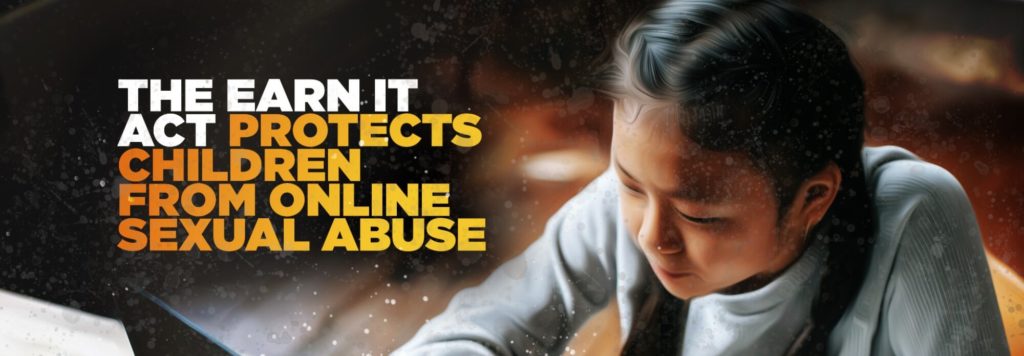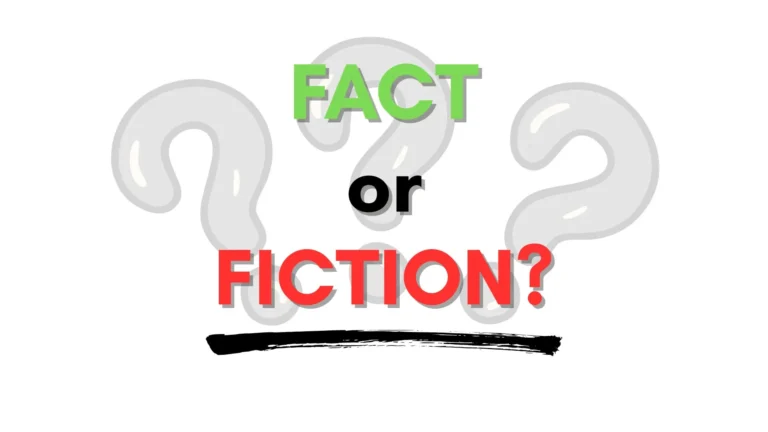April is dedicated to raising awareness about two critical issues that make up part of the pernicious web of sexual abuse and exploitation: sexual assault and child abuse. While we are fighting these every day, this month of increased visibility and awareness is a crucial time to help people understand how best to protect children from ever experiencing any form of sexual abuse and assault
If we truly want to create a world where all children can live and love free from sexual abuse and exploitation, we must expose the way all forms of sexual abuse and exploitation overlap and reinforce each other. We are passionate about raising awareness on the different kinds of abuse, and standing for the countless brave survivors of exploitation across the world. Thank you for joining us by taking action below.
Why Current Solutions for Combating Child Sexual Abuse Aren’t Enough
Clearly, child sexual abuse is a rampant—and too often invisible—problem that leaves countless victims scarred with significant trauma. But current solutions often focus entirely on providing services for victims. To be clear, survivor services are an extremely necessary and critical piece to providing care and resources for those who have experienced sexual abuse. Prevention efforts are meant to be implemented earlier and go a step further by preparing and teaching kids crucial information about identifying and avoiding sexual abuse. As one organization for child trauma puts it: “it is therefore critical to focus not only on detection, but on prevention and communication—by teaching children about body safety and healthy body boundaries, and by encouraging open communication about sexual matters.”
Teaching children about boundaries and giving them space to open up about difficult subjects is a key tool for combatting child abuse. However, similar to points made surrounding the #MeToo movement and sexual assault, why aren’t we going after the perpetrators in a more targeted effort? Why is the message always “don’t be abused” rather than “don’t abuse”?
What if we went even further and focused on a different approach? One that would tackle the problem at the root? What if we focused on solutions that help curb acts of perpetration themselves?
Efforts to Prevent Child Sexual Abuse Need to Include Focus on Perpetrators
To be most effective, prevention efforts need to include stopping the perpetrator(s) of child sexual abuse a.k.a. those who create the “demand” for victims. The “demand” for victims is the animating source behind predators prowling the Internet, mainstream pornography normalizing teen-themed content, and sex traffickers targeting and supplying children for prostitution.
There is no one defining trait that makes someone a perpetrator of child sexual abuse. Tragically, the data shows that people who sexually abuse children can be fathers, mothers, stepparents, grandparents, uncles, aunts, and cousins. They can be neighbors, babysitters, religious leaders, teachers, and coaches. They come from all classes, racial and religious backgrounds, and sexualities. Most of those we know about who sexually abuse children are men, statistically speaking, but women can be perpetrators as well.
Due to the nature of needing access to a child in order to abuse them, perpetrators are often people the child already knows, such as a family member or teacher, but this is not always the case – especially when the anonymity and perception of closeness online spaces (like social media) can be used to gain access to children a predator might not have had otherwise.
Because a perpetrator of child sexual abuse can be almost anyone, it’s extremely important to examine the external factors and other forms of sexual exploitation that reinforce and influence such behavior and create the demand for victims.
Pornography Used as a “Training” Tool to Groom Kids
Perpetrators of child sexual abuse, especially those that find and groom victims online, often use pornography as a way to further manipulate and control the child. The typical grooming process is all about establishing trust between the perpetrator (who could be pretending to be a younger, similar age to the child or not) and the potential victim. Once that trust has been established, many perpetrators will then escalate conversations by introducing sexual topics. One internet safety organization explains:
“After the child’s trust develops, the groomer may use sexually explicit conversations to test boundaries and exploit a child’s natural curiosity about sex. Predators often use pornography and child pornography to lower a child’s inhibitions and use their adult status to influence and control a child’s behavior.”
The use of pornography, in particular CSAM (child sexual abuse materials, sometimes known as “child pornography”) is often a key “training” tool in order to normalize the sexual aspects of the relationship and prepare the child to participate in acts they may not have otherwise. A prominent expert on child abuse and neglect wrote, “Children who see peers engaging in sex and apparently enjoying it may be more likely to comply with the molester’s demands.”
Perpetrators can even use CSAM to groom and recruit children into participating in the creation of new material, which can then be sold and distributed. The existence of such material may also provide further leverage for the perpetrator to exploit and manipulate the child into more behavior and sex acts, in what is sometimes called “sextortion.”
Child Sexual Abuse Material is Rampant Online
Reports of child sexual abuse materials (CSAM) have grown exponentially in recent years, with 3,000 reports in 1998 growing to more than 1 million in 2014 and 18.4 million in 2019. The New York Times called it an “almost unfathomable” increase in criminal behavior. Viewing, possessing, and distributing CSAM is a federal crime and constitutes as child sexual abuse.
Mainstream pornography, peddled by tube sites such as Pornhub (which currently faces six lawsuits and counting for hosting and profiting from the filmed rape and abuse of both adult women and children) is rife with child sexual abuse material (CSAM), rape, racism, and myriad other forms of exploitative and criminal material. Teen and child “themed” pornography, even if it features adult actors, normalizes child sexual abuse to an extreme. Pornography has become, tragically, a “key social institution” for developing “norms” of sexual conduct, leading some individuals to act out on children or seek out CSAM. This is especially evident when looking at cases of harmful child on child sexual behavior—many children who are exposed to pornography go on to act out what they’ve seen on other kids.
Those using online pornography are very likely using CSAM images as they are intermingled in nearly all websites hosting sexually explicit material (e.g. Twitter, OnlyFans, Pornhub, Google Images, and more).
Pornography Users Sometimes Seek to Act Out
Research has demonstrated that pornography use can have a profound impact on an individual’s own sexual behavior and attitude. A meta-analysis of 46 studies reported that the effects of exposure to pornographic material are “clear and consistent,” and that pornography use puts people at increased risk for committing sexual offenses and accepting rape myths. Pornography has also been linked to:
- Male sexual aggression against women (effects being more pronounced among men who are predisposed to sexual aggression, who consume pornography with higher frequency, or who use violent pornography, see here)
- Physical and verbal aggression among both male and female pornography consumers
- Greater likelihood of adolescents sexually harassing a peer (see also here)
- Adolescents perpetrating coercive and forced sexual behavior (i.e. child-on-child harmful sexual behavior (see also here)
- Physical and sexual victimization of adolescents
- Purchase of sex (see also here)
Pornography use has also shown symptoms similar to those with substance addiction, including the process of desensitization—meaning users need more extreme content over time in order achieve the same level of arousal.
Demand for Prostitution Is Increasing Child Sexual Abuse
The normalization of prostitution has created a significant threat for increased child sexual abuse. As pimps and sex traffickers seek to fill the demand created by sex buyers, they often seek vulnerable children to pull into the commercial sex trade.
Increasingly, children are targeted and groomed by these predators online, lured into false relationships or extorted through the sharing of sexually explicit images. This is happening right in plain sight on social media apps like Instagram and Discord.
Prostitution websites like Seeking Arrangement and OnlyFans prey upon and encourage young women to open accounts to sell access to their bodies for public consumption. When one young social media star and rapper turned 18 years old, she broke the OnlyFans record for making $1 million in her first 6 hours on the platform – only a few days after the birthday that declared her “legal.” NCOSE has heard reports of users creating accounts on OnlyFans despite being under-age, and evidence of trafficking has been documented on the platform. The popularity of such a site and the abundance of very young women and children fuels the demand for male access to women and children’s bodies, and quietly sanctions the sexualization and profit of child sexual abuse material.
What are Solutions for Combating Child Sexual Abuse?
Our work is dedicated to exposing these societal connections that can lead to severe problems like child sexual abuse. This work includes advocating for corporations—including social media platforms—to change their policies to better protect children online and dismantling the pillars of infrastructure which support the exploitative pornography industry.
The Dirty Dozen List is an annual campaign that lists 12 mainstream corporations which have facilitated or profited from sexual exploitation, and we’ve seen significant victories that have improved child safety online and made it harder for predators to access potential victims. We’re also advocating for institutions—like summer camps and churches, among others—to do more to prevent abuse from happening within their systems by implementing robust training and protection policies.
National proposed legislation like the EARN IT Act would also help curb perpetration by creating incentives for corporations to prioritize child safety and stem the seemingly-endless tide of child sexual abuse material that has been overrunning the Internet.
It’s also critical to acknowledge that true prevention cannot happen without services and rehabilitation for those who have committed child sexual abuse.
- The Association for Treatment of Abusers, or ATSA, promotes sound research, effective evidence-based practice, informed public policy, and collaborative community strategies that lead to the effective assessment, treatment, and management of individuals who have sexually abused or are at risk to abuse.
- Stop It Now is an anti-child abuse organization that also provides some resources and hope for perpetrators.
- The Child Molestation and Research and Prevention Institute provides a national directory available online of sex-specific therapists offering evaluation and treatment of adults and youth.
- For children that have perpetrated sexual abuse, there are child therapists and child advocacy centers (CACs are found all across the US) that are equipped to work through solutions and lower the risk of re-offense later in life.
The problem of child sexual abuse is serious and pervasive, but it is not hopeless.
By flipping the script and addressing the factors that influence the demand for child sexual abuse, we can begin to not only treat the victims but also prevent countless future ones. It’s time for each of us to join the movement that is creating a world that is truly free from all forms of sexual abuse and exploitation.






